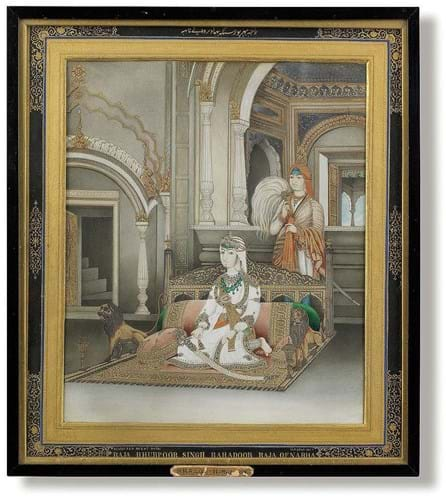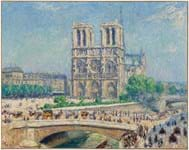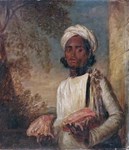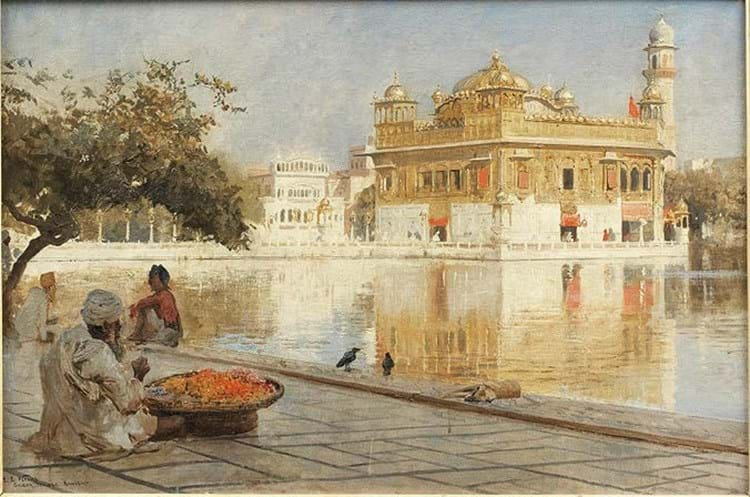
The Golden Temple, Amritsar by Edwin Lord Weeks – £400,000 at Bonhams.
Like Sotheby’s and Christie’s, Bonhams has been staging a growing number of these cross-departmental sales including last year’s The Male Form and Blazing A Trail: Modern British Women (see ATG No 2514), both of which are being repeated later this year.
While it is difficult to gauge what difference these themed auctions make in terms of prices achieved for individual items, they are often seen as a good platform for promoting the category and, to some extent, allowing works to be placed in a relevant artistic and historical context.
This was presumably the thinking behind the most recent sale – although it may well have also been to give big-spending Indian buyers an opportunity to view a range of lots all in one go rather than having to dip in and out of various catalogues. This meant the auction on June 7 was even broader in scope than the other recent themed sales.
Some of the best action came among the 28 pictures, which yielded all bar one of the top 10 prices.

Detail of part of a large panorama showing the royal procession of the Sawai Maharaja Jai Singh Prabhakar, Maharajah of Alwar (reigned 1892-1937) – £200,000 at Bonhams.
Way out in front
On offer were both Indian pictures by native artists and depictions of the country by Westerners – the like of which usually appear in Orientalist sales. One such work led the day by some margin: an elegant view of the Golden Temple in the city of Amritsar in Punjab by Edwin Lord Weeks (1849-1903).
Along with Frederick Arthur Bridgman (1847-1928), Weeks is regarded as the leading American Orientalist. While works appear on the market fairly regularly, highquality examples depicting famous landmarks such as this rarely emerge.
The artist, who in his youth studied under Léon Bonnat and Jean-Léon Gérôme in Paris, made many voyages to the East and is known to have visited the Golden Temple in the 1890s, most likely on several occasions.
One visit in 1893 is particularly well documented and was mentioned in his 1896 publication From the Black Sea Through Persia and India. He wrote of the temple having “the impression of a glittering jewel, or of some rare old Byzantine casket wrought in enamel and studded with gems”. He continued: “It has at first sight a glamour of unreality, like an opium vision of De Quincey, or the ‘pleasure dome of Kubla Khan’.”
Weeks painted the temple several times in a number of formats, ranging from simple grisaille illustrations to one of the most monumental paintings he ever produced: a work measuring over 3m wide which is now housed in the Annmary Brown Memorial in Rhode Island.
This 20¼in x 2ft 6in (52 x 77cm) signed oil on canvas at Bonhams shared many of the same features as that larger work, including the same perspective and a similar composition with a figure in the foreground as well as the reflection of the temple in the water and the overhanging tree. It seems likely, therefore, that the two works were painted at around the same time.
Bonhams had contacted Edward S Levin, who helped compile the catalogue raisonné for the artist, and he confirmed the authenticity of the work. The auction house plumped for a £100,000-150,000 estimate which was in keeping with prices for works of this size.
However, a number of key factors raised this picture above the regular fare. The work not only demonstrated a distinct combination of precise draughtsmanship and a loose, painterly style which is characteristic of Weeks’ best work, but it also showed a deftness of touch in the handling of light and shadow.
Along with the fact that it depicted the preeminent Sikh spiritual site, the painting’s commercial rarity meant that Bonhams was fully justified in describing it in the catalogue as “a beautiful and important work from the artist’s last period of Indian paintings”.
After drawing strong interest it was knocked down at £400,000 – a sum representing the fifth highest for Weeks at auction. Bonhams said no information was available about who placed the winning bid.
Historical panoramas
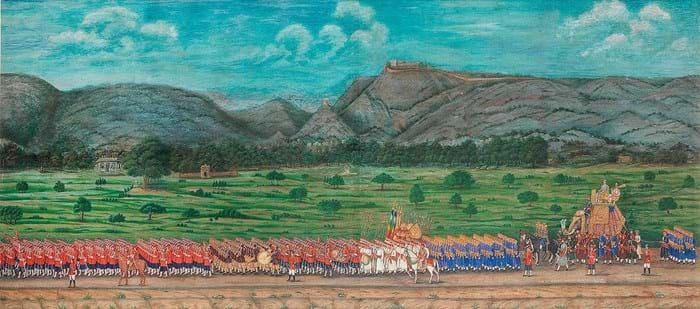
Part of a large panorama showing the royal procession of the Sawai Maharaja Jai Singh Prabhakar, Maharajah of Alwar (reigned 1892-1937) – £200,000 at Bonhams.
Also adding notable amounts to the bottom line were two large historical panoramas by Indian artists.
One measuring an extraordinary 26ft 8in x 2ft 3in (8.15m x 67cm) depicted the royal procession of the Maharajah of Alwar in the early 20th century. Painted in six sections, the gouache and bodycolour with gold on heavy paper was signed by R Sahai (fl. early 20th century), the Alwar state painter from c.1903-09.
Reflecting the Mughal tradition of recording these grand royal processions as wall murals, the artist executed finely detailed depictions of the prominent figures, horses, elephants and carriages with the Maharaja Jai Singh himself shown on the royal elephant carriage in full regalia.
It came to auction having been in a New York collection in the 1980s. The ambitious treatment and scale of the panorama led to an estimate of £200,000-300,000.
Although it was knocked down on low estimate, it fetched a notable sum for an artist who, although employed by the maharajahs, has almost no other recorded works published or referenced.
Drawing a bit more demand against a lower £120,000-150,000 pitch was an impressive view of the city of Lahore from c.1840-45. Painted by a local artist, it reflected the highly detailed topographical studies produced at the tail end of Mughal power and included identifying inscriptions in Persian on the painted surface.
Some of these works ended up in Europe, such as those acquired by the Austrian doctor Johann Martin Honigberger who was in Lahore at the Sikh court between 1829-33, and again from 1839-49.
Measuring 9½in x 7ft 9in (24cm x 2.35m), the watercolour at Bonhams was executed on 11 separate joined sheets of paper.
Other examples of these panoramas have emerged at auction before. One of similar size and date appeared at Christie’s in October 2011, making £49,000, while a smaller example from a similar viewpoint made £16,000 again at Christie’s the following year.
But with the market having moved on significantly since then, this one was bid up to £140,000, at which point it was knocked down to a UK private collector on the phone.
Manageable miniatures
In terms of the smaller works on offer, a number of lots showed the rising demand for India miniatures. These tend to be more manageable for many buyers and are more prevalent on the market due to the stronger supply.
A 10½ x 8¾in (27 x 22cm) gouache and gold on paper depicting Bharpur Singh, Rajah of Nabha in Punjab who reigned from 1847-63, along with an attendant, was one such example. The sitter had helped the British during the mutiny of 1857 and was rewarded with the grant of the divisions of Baval and Kanti.
The picture, which showed the rajah in c.1858, had been painted by the Delhi artist Shahrukh Beg (fl. mid-19th century). In many ways it followed the traditional formal style and technique of the portraits produced by his more famous uncle, Ghulam ‘Ali Khan (fl. c.1817-55).
The picture came to auction with an attractive provenance having been presented to George Carnac Barnes, the governor of the Cis-Sutlej States in north-west India after 1860, and had since descended in the same UK private collection. Estimated at £10,000-15,000, it took £45,000, selling to a UK private collector in the room. A decade ago, such a picture would have commanded under half this amount.
Another miniature from the same source showing the Rajah of Jind (reg. 1834-64) seated on a terrace in a European-style chair took a top-estimate £12,000, again a decent price and no doubt helped by the favourable provenance.
Strong at the top
Overall the Bonhams sale raised £1.19m with 47 of the 102 lots selling (46%). Despite the high unsold rate by lot, the selling rate by value was 99.5%, an indication that the sale was a bit top-heavy, with the majority of the top lots doing well but significant casualties found further down the price scale.
Bonhams has yet to make a formal decision about whether to repeat the India in Art sale but a spokesman for the auction house said “history suggests it’s likely”.



